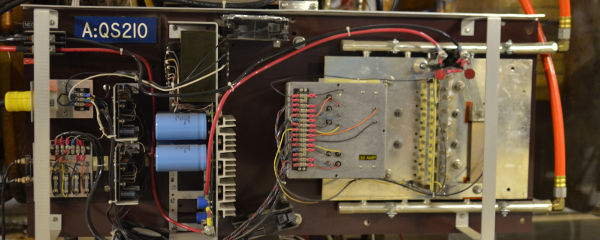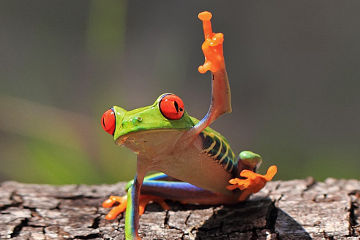What I’ve Learned:
“Zinc finger: When you’re a protein, it’s good to get the finger.”
Frogs have given us many things over the years. There’s Kermit the Frog. And… uh, frog legs. And Froggy, from the Little Rascals.
So, three things. Frogs have given us three things. But it turns out there’s a fourth: frogs have also given us the finger. Which is nice.
That’s because the finger in question is something called a “zinc finger”, an important motif in many useful proteins, and it was first identified in a species of African clawed frog that scientists often study when they get tired of squinting at lab mice and fruit flies.
But what is a zinc finger, exactly? In frogs — and most everywhere else, including in people — it’s a set of different regions in a protein that fold together into a finger-like protrusion, which is held in place by various separate bits binding to a single zinc ion. This keeps the “finger” rigid, and the structure stable. The zinc is like the hair scrunchie holding bits of ponytail together, or the plastic doohickey on top of a six-pack.
That’s the classical zinc finger setup, anyway. Since the first, researchers have found other ion-binding interesting structures, including the zinc ribbon, the treble clef and the gag knuckle, which sounds like something out of Fifty Shades of X-Ray Crystallography. They all look a bit different, but have a more or less similar function.
And that function is to reach out and grab onto other things, as fingers are wont to do. Many zinc finger proteins bind to DNA, where they perform (or help other proteins perform) helpful functions like replicating DNA, transcribing DNA into RNA and regulating cell growth, function and hairstyle.
Wait, no. The scrunchy does the hairstyle. But the zinc fingers do all the other stuff.
It’s not just DNA these zinc fingers wrap their sticky selves around, though. Some of them grab onto RNA, others onto specific proteins, and still others grab small molecules of various kinds that float around living cells. Without the zinc fingers, these proteins couldn’t hold on to any of these bits. And if they couldn’t hold on — and there were no microscopic six-pack holders handy to replace them — then our cells wouldn’t get much of anywhere. And we wouldn’t be around to make unsettling science-based Fifty Shades jokes.
Clearly, it would be a world diminished.
If you’re a fan of zinc fingers — and by now, you must be — then you’ll be happy to know that scientists are now able to put them to good use in the lab. With a bit of molecular fiddling, researchers can vary the specificity of zinc fingers for DNA or proteins, to enable new (or limit old) functionality. And they can snip the zinc finger-coding portions out of genes and glom them onto other genes, creating new proteins that can bind and cut specific DNA sequences, for instance. Scientists then use these fingered-up proteins to silence or activate genes and study the effects on cells.
That’s very clever — like taking one of those six-pack rings and making them into, I don’t know, a dress. Only the dress can’t do science. We hope.
So the next time your DNA or protein does something useful, remember the zinc finger proteins and all we’ve discovered about them. And be happy that once upon a time, frogs gave science the finger. Those little rascals.



